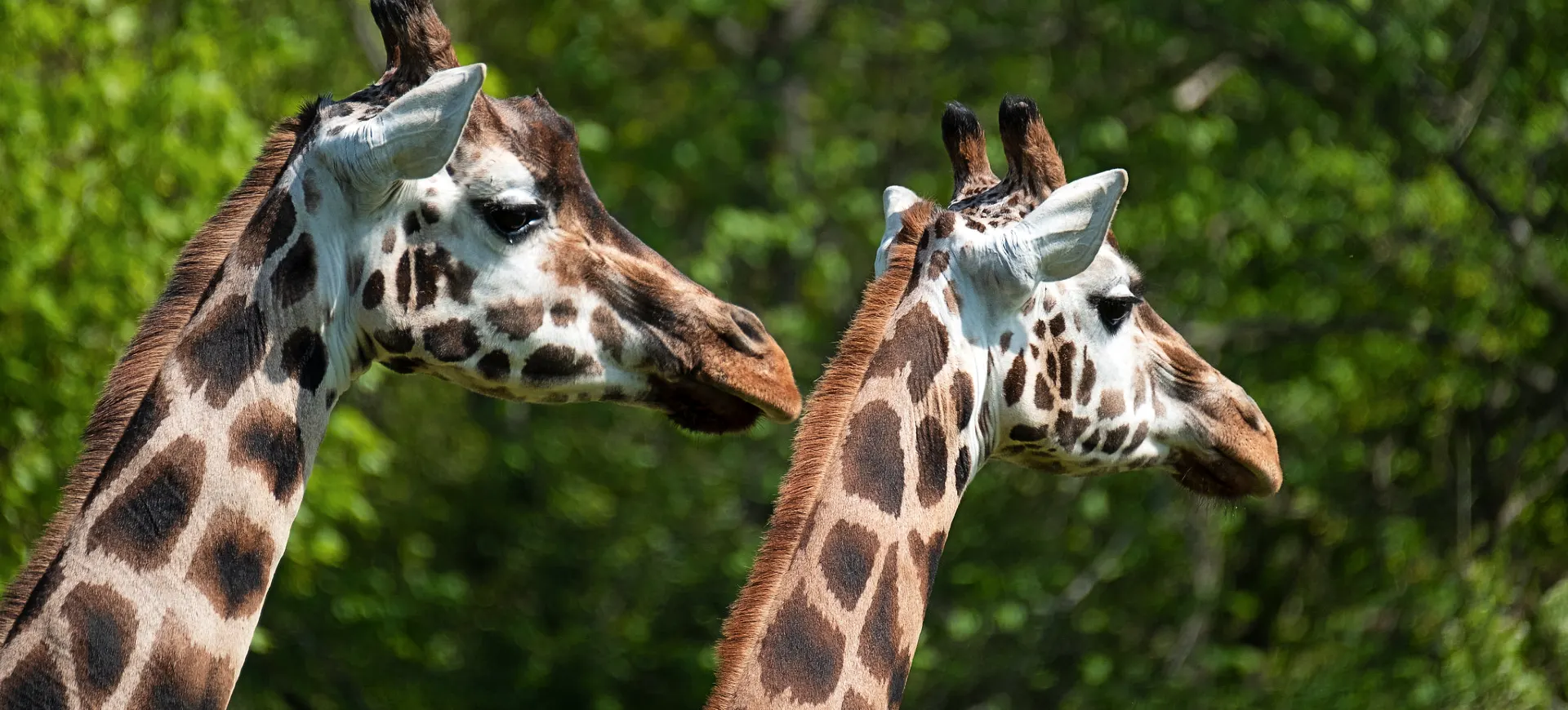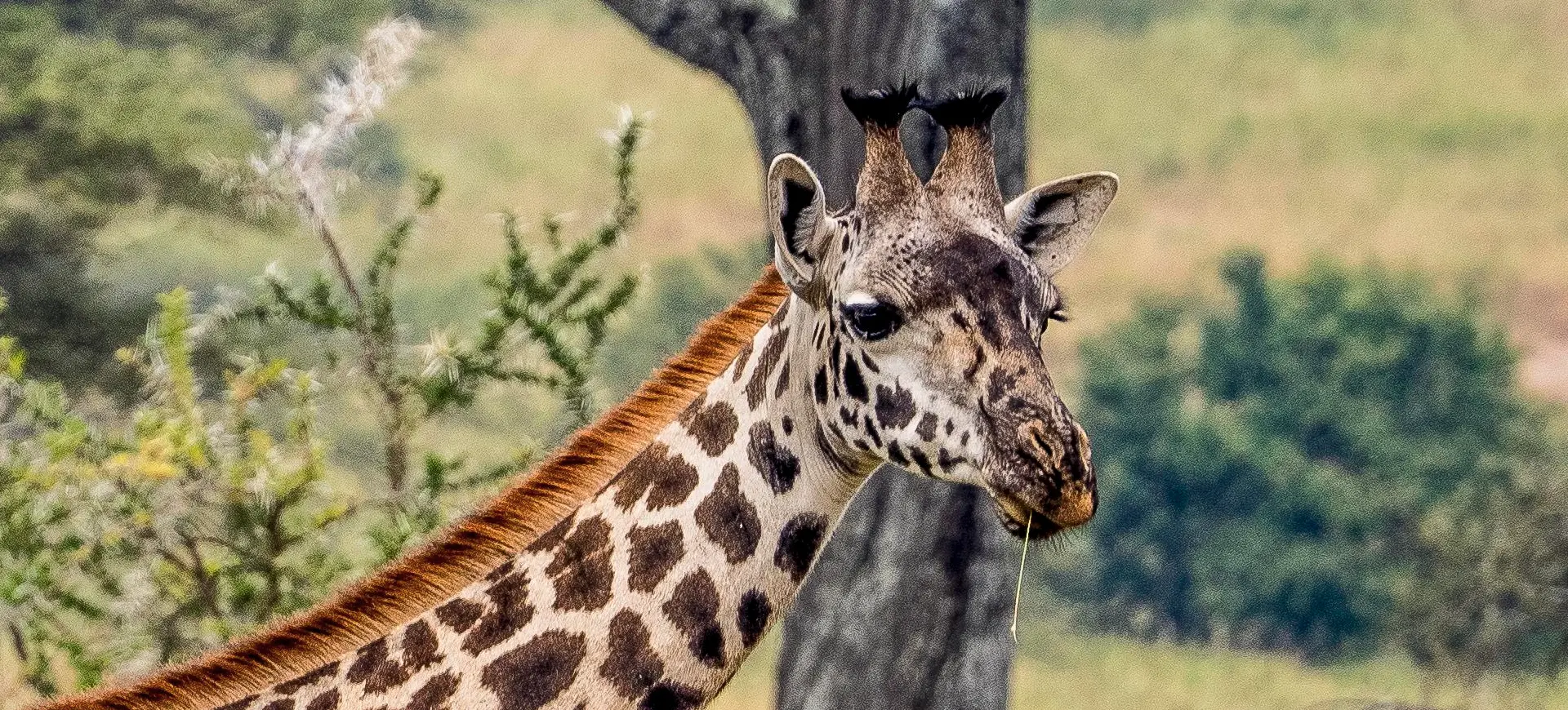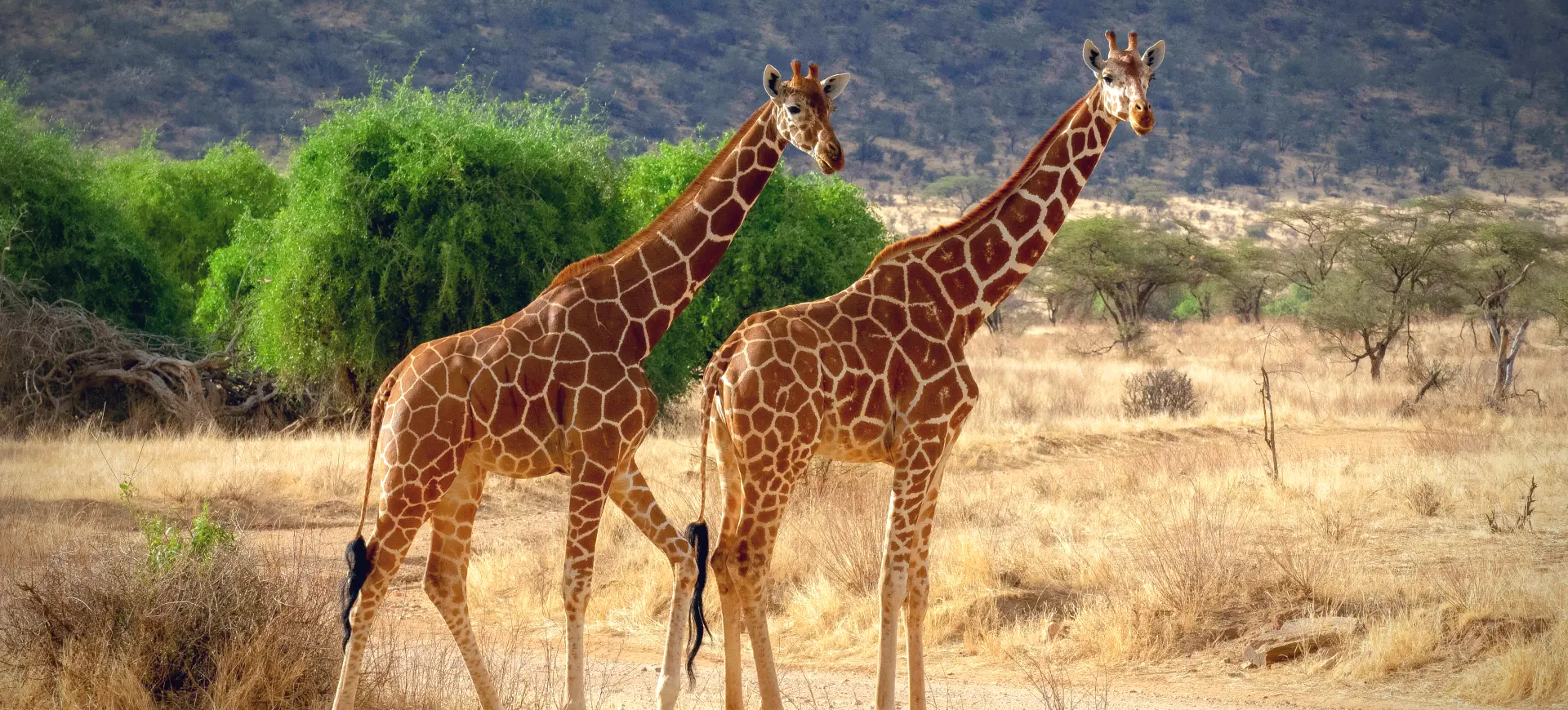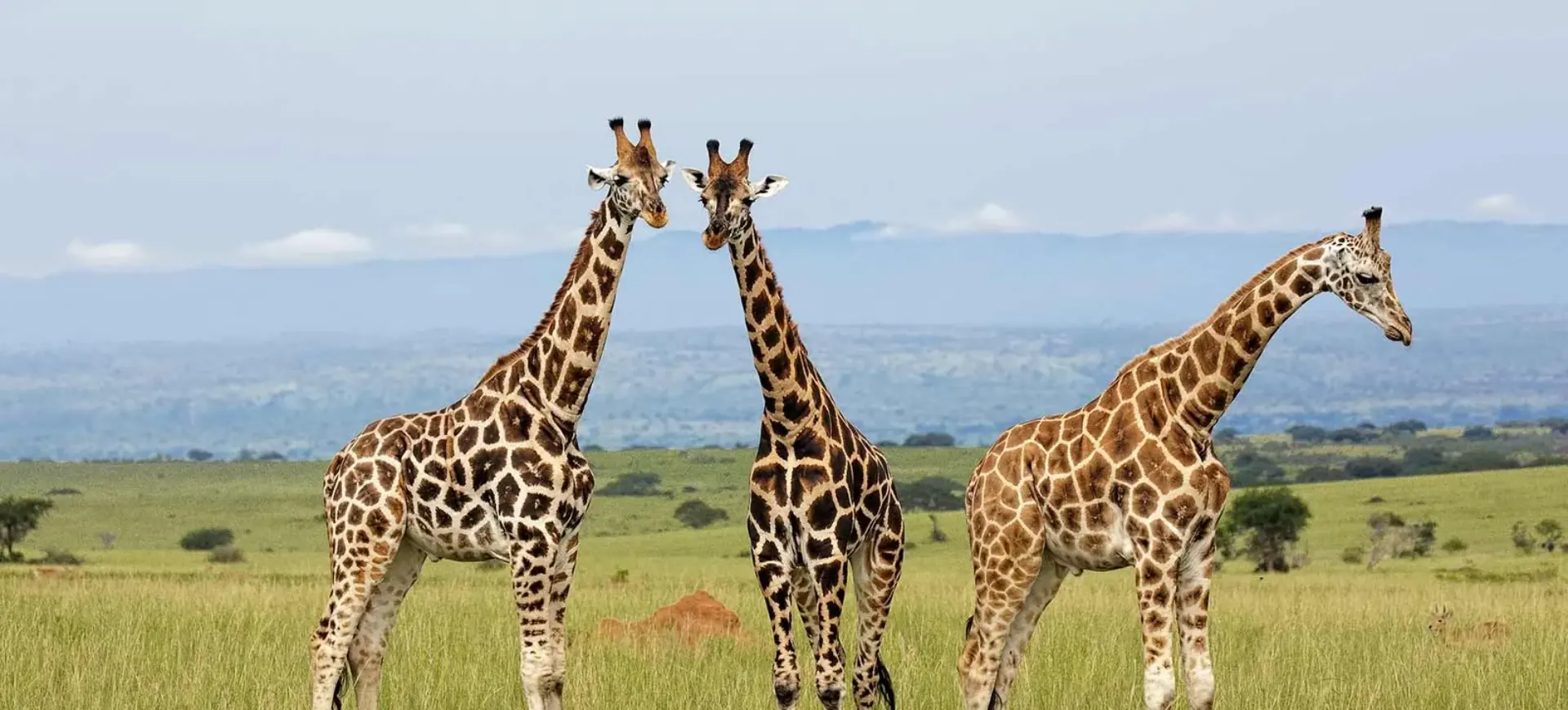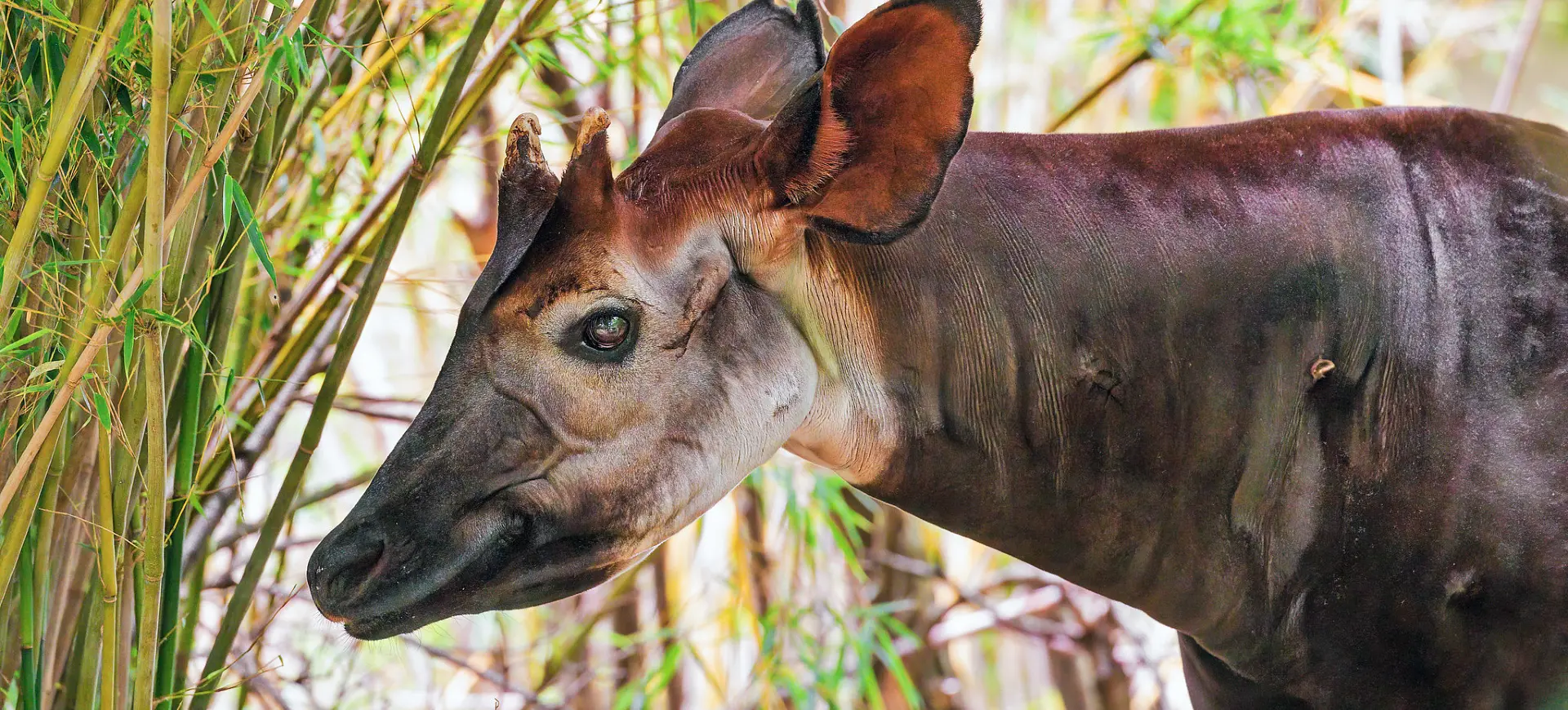Overview
The Reticulated Giraffe, or Giraffa camelopardalis reticulate, is a captivating subspecies distinguished by its stunning coat adorned with large, polygonal, liver-colored spots. These distinctive spots are surrounded by a network of bright white lines, creating an eye-catching pattern that resembles a net. Hence the name “reticulated.” Notably, even among giraffes, the legs of the reticulated giraffe are remarkably long, adding to its majestic appearance.
These giraffes exhibit a truly awe-inspiring presence in their natural habitat with their towering height and graceful movements. Their elongated necks and slender legs, characteristic of all giraffes, are a testament to their remarkable environmental adaptation. The extended necks enable them to reach vegetation other herbivores cannot. At the same time, their exceptional height affords them an advantage in surveying their surroundings for potential threats, aiding in the early detection of predators from afar. This unique combination of features places the reticulated giraffe at the pinnacle of the animal kingdom, a testament to nature’s incredible diversity and beauty.
Reticulated giraffes are magnificent in the wild, with their striking appearance and captivating presence. The splendor of their coat pattern and towering stature makes them iconic in their natural habitat. Their long necks, exceeding even the impressive proportions of other giraffe subspecies, enable them to browse for leaves in the highest branches of trees, granting them access to a bountiful food source that other herbivores cannot reach. Their height also affords them a strategic advantage, allowing them to spot potential predators from afar and react accordingly, enhancing their chances of survival in the savannah landscape. The reticulated giraffe’s unique combination of physical attributes and striking beauty solidifies its place as a true marvel of the animal kingdom.
Taxonomy
Kingdom
Phylum
Class
Order
Family
Genus
Species
Sub Species
Type
Physical Description:
Reticulated Giraffes are known for their unique and striking coat pattern. The polygonal patches are large, well-defined, and brilliantly orange or chestnut to darker brown, separated by thin white lines creating a net-like pattern. The lower legs are often white, and like other giraffes, they possess short ‘ossicones’ on their heads and hair-covered horns.
Their long necks contain only seven vertebrae, the same number as human necks, but each is up to ten inches long. Males tend to be taller and heavier than females, and their ossicones become bald on top due to frequent necking – a ritual combat to establish dominance.

Lifespan: Wild: ~20 years || Captivity: ~30 years

Weight: Males: Up to 3,000 lbs (1360 kg) || Females: Up to 2,500 lbs (1134 kg)

Height: Males: Up to 18 feet (5.5 meters) || Females: Up to 17 feet (5.2 meters)

Top Speed: 37 mph (60 km/h)
Characteristic:
Native Habitat:
Reticulated Giraffes, scientifically known as Giraffa camelopardalis reticulate, is native to the Horn of Africa, with their range encompassing regions such as Somalia, southern Ethiopia, and northern Kenya. Their remarkable coat, adorned with large, liver-colored spots outlined by a network of bright white lines, is a distinct characteristic that sets them apart from other giraffe subspecies. This unique coat pattern is where their name “reticulated” is derived from, as it resembles an intricate net. Additionally, even among giraffes, the legs of the reticulated giraffe are notably long, adding to its impressive and majestic appearance.
These giraffes thrive in diverse habitats, primarily occupying savannahs, open woodlands, and riverine forests. Within these environments, they find abundant acacia trees, their primary food source. The extended necks and adept browsing abilities of reticulated giraffes enable them to reach leaves in the highest branches of the acacia trees, a feat that proves challenging for most other herbivores. Their unique adaptation to their surroundings and striking appearance make the reticulated giraffe a captivating and iconic symbol of the African savannah.
Climate Zones:
Biomes:
WWF Biomes:
Biogeographical Realms:
Continents:
Diet:
Diet & Feeding Habits:
Reticulated Giraffes are browsers, feeding mostly on leaves, twigs, and fruits of trees and shrubs. They favor the high, protein-rich leaves of acacia trees, which they can reach with their long necks and 18-inch long, prehensile tongues. This reach is aided by a specially adapted joint in the neck just above the base, allowing the giraffe to angle its head upwards.
Their long tongues are tough and covered in bristly hair to protect them from the thorns of the acacia trees. Despite their large size, they don’t require a lot of water and can go weeks without drinking, gaining most of their water from their leafy meals.
Mating Behavior:
Mating Description:
Reticulated Giraffes exhibit year-round breeding behavior with no specific breeding season. During this time, male giraffes, commonly called bulls, used a unique method to assess female fertility. By tasting the urine of females, known as cows, they can sense hormone levels, determining if the cow is in estrus or receptive to mating. If the female is in estrus, the male will court her to establish a mating connection.
Once a receptive female is identified, the male will remain close to her, fending off other competing males, ensuring exclusive access to the female during her fertile period. This protective behavior helps maximize the bull’s chances of successfully mating with the receptive cow, contributing to the continuation of the species. The absence of a specific breeding season and the fascinating courtship rituals of these magnificent creatures add to the wonder and complexity of the giraffe’s natural history.
Reproduction Season:
Birth Type:
Pregnancy Duration:
Female Name:
Male Name:
Baby Name:
Social Structure Description:
Reticulated Giraffes exhibit a fission-fusion social structure characterized by the dynamic nature of their group compositions. Herds are not fixed, and individuals can move between different groups, leading to frequent changes in the composition of these gatherings. While herds typically consist of individuals of the same sex, mixed-sex groups are also common, reflecting the fluidity of their social interactions.
To establish dominance, male giraffes engage in “necking” bouts, ranging from gentle rubbing to more intense and sometimes violent exchanges. This behavior is crucial in determining hierarchy and social status among males, contributing to the intricate dynamics of their social structure. The fission-fusion society and unique necking behavior add to the intriguing complexity of Reticulated Giraffes’ social lives, showcasing the intricacies of their interactions within the wild.
Groups:
Conservation Status:
Population Trend:
Reticulated Giraffes have experienced a substantial decline in population, with fewer than 11,000 individuals remaining in the wild. This decline is largely attributed to the detrimental impacts of human activities, including habitat loss due to agricultural expansion, where their natural habitats are cleared for agricultural purposes. Additionally, they face the threat of poaching for their meat and hide, which further adds to the pressure on their dwindling numbers.
Furthermore, civil unrest in their native regions poses additional challenges to conserving these majestic creatures. The combination of these threats places the Reticulated Giraffe at risk, underscoring the urgency of conservation efforts to protect and preserve this iconic species for future generations.
Population Threats:
Reticulated Giraffes face several significant threats to their survival. One of the primary challenges is habitat loss, resulting from agricultural and urban expansion encroaching upon their natural habitats. Additionally, the illegal hunting of these majestic creatures, known as poaching, poses a severe risk to their populations, driven by the demand for meat and hide.
Furthermore, ecological changes, such as habitat fragmentation, further exacerbate Reticulated Giraffes’ challenges. This fragmentation disrupts their natural habitats and can isolate populations, reducing genetic diversity and limiting their access to essential resources. Finally, civil unrest in their home regions adds to the pressures on these animals, further contributing to the decline in their numbers. The conservation of the Reticulated Giraffe is of utmost importance to address these threats and ensure the preservation of this iconic species for generations to come.
Conservation Efforts:
Conservation initiatives for Reticulated Giraffes center on crucial strategies to protect these magnificent creatures. Anti-poaching measures play a pivotal role in safeguarding the giraffes from illegal hunting, helping to curb the demand for their meat and hide. Habitat conservation and restoration efforts aim to preserve and restore the giraffes’ natural environments, ensuring they can access ample resources.
Addressing human-giraffe conflict is equally crucial, with community-based conservation initiatives fostering coexistence between humans and giraffes. These efforts help reduce the potential for conflicts and ensure the peaceful cohabitation of both communities. In tandem, ex-situ conservation programs in zoos worldwide focus on captive breeding and educating the public about this remarkable species, further contributing to the conservation and awareness of the Reticulated Giraffe. Together, these comprehensive endeavors are essential in securing a brighter future for this iconic animal.
Additional Resources:
Fun Facts
- Reticulated Giraffes have one of the shortest sleep requirements of any mammal, between 10 minutes and two hours in a 24-hour period, averaging 1.9 hours per day.
- Despite their long necks, they have the same number of neck vertebrae as humans: seven.
- They have a top speed of 37 mph and can maintain 31 mph for several miles.
- Their 18-inch long tongue helps them to reach foliage other herbivores can’t, and is tough and prehensile to handle thorns on acacia trees.
- A giraffe’s spot pattern is unique to each individual, much like a human fingerprint.
- Giraffes are capable of running on their first day of life.
- Despite their height, giraffes still only have two gaits: walking and galloping.
- Male giraffes use their necks for combat in a behavior known as “necking”.
- Reticulated Giraffes are the most social species of giraffes and the most likely to form long-term relationships.
- Giraffes only need to drink once every several days because they get most of their water from their plant-based diet.





